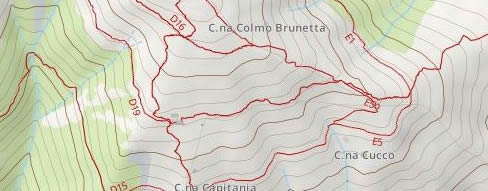The "LA GRANDE TRAVERSATA DEL BIELLESE"

A 15-day hike through a surprisingly rich and varied territory along a modern and well-equipped network of paths. Blessed with spectacular views, and embracing roads of faith, historic villages and marvels of nature,the area is a paradise for hikers close to North Italy's two largest cities.
The commonest reaction of visitors to the province of Biella is surprise: surprise at the beauty and variety of the land, the grasslands of the Baragge and the physical geography of the Serra, the grandeur of the Sanctuary of Oropa, and the sheer number of the places of worship. More surprising features are the ancient stone mounds in the Bessa gold-mine, the exceptional condition of the Ricetto di Candelo, the unbounded views from the Tracciolino, and the perfection of the dry stone walls in Valle Cervo. What is not surprising, however, is that a territory with so many points of interest has also been the birthplace of many distinguished individuals with a love for the natural environment. The names of a few, not an exhaustive list by any means, are given below. They were all successful businessmen who were so deeply attached to the land and mountains that they dedicated much of their energy, and even some of their wealth, to protect the environment: for example, the Sella family from Sella di Mosso, of whom Quintino is the best known, having become one of the first Finance Ministers in the new Italian state, but he was also the founder of the Club Alpino Italiano (Mountaineering Club of Italy). His nephew Gaudenzio founded the Banca Sella (still one of the most important private banking groups in Italy), his descendant Vittorio became famous in the late nineteenth and early twentieth centuries as a mountain photographer, and Alfonso distinguished himself as a botanist and painter. Another family closely tied to the province of Biella was the De Agostini of Pollone. Alberto Maria, a priest of the Salesian Order was a famous explorer who visited Patagonia and Tierra del Fuego,and in 1901 his brother Giovanni founded the Istituto Geografico that still bears his name.

